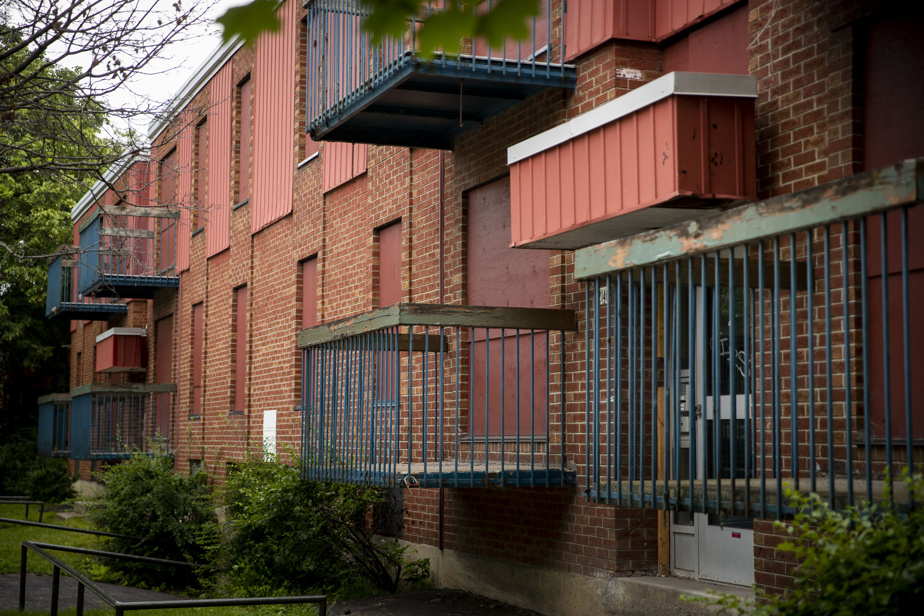Although there are still thousands of HLMs left vacant, in particular because of their dilapidation or work to be done, their number has decreased in Quebec in the last year, indicate figures obtained by The Press.
According to data from the Société d’habitation du Québec (SHQ), at the end of December 2023, there were 3,993 low-rent housing (HLM) units empty for more than four months in the province, compared to 4,689 in December. 2022. This means 696 fewer apartments were left vacant over a long period last year compared to the previous year.
Although the most recent figures are still preliminary, “the downward trend is real and reliable,” assures Sylvain Fournier, spokesperson for the SHQ.
We can say that the situation is improving in Quebec in terms of vacant housing in public housing.
Sylvain Fournier, spokesperson for the Société d’habitation du Québec
It is in Montreal that the decrease is most marked. At the end of 2022, there were more than 2,400 uninhabited HLMs out of a real estate stock of some 20,810 housing units managed by the Office municipal d’habitation de Montréal (OMHM) and 2,926 private HLMs. This number had fallen to 1,800 empty homes for more than four months at the end of 2023, and would have fallen further to fall below 1,500 at the end of last February.
The year “2023 and the first months of 2024 were very active periods in terms of work in HLM, which has a direct effect on uninhabited housing,” says Mathieu Vachon, spokesperson for the OMHM. Last year, $136.8 million was invested in Montreal.
“This has notably enabled the completion of 150 major projects, and the preparation of dozens of other major projects to come. This budget also includes a proportion which made it possible to rehabilitate hundreds of vacant housing units after the departure of tenants, explains Mr. Vachon. All of this therefore had the impact of considerably reducing the number of vacant housing units. »
The fact remains that 6% of the city’s HLMs have remained vacant for more than four months.

For Quebec, we are talking about a vacancy percentage over the same period of 5% on a stock of some 74,350 housing units.
Note that 34,252 households are currently on the waiting list for HLM or to obtain a public rent supplement (which allows them to live in private housing by paying rent similar to that of HLM).
Four out of five HLMs in “poor condition”
“In the midst of a housing crisis, it is distressing to note that 5% of the HLM stock is still vacant due to the dilapidation of nearly 4,000 housing units,” laments Robert Pilon, community organizer at the Federation of Low-Rent Housing Tenants. of Quebec (FLHLMQ).
The SHQ cites three main reasons to explain why an HLM is empty for a long period. Some are uninhabited because major work must be carried out there. Others are deemed uninhabitable or unsanitary and still others must be rehabilitated after the departure of a tenant.
Just in Montreal, four out of five HLMs are considered in “bad” or “very poor condition,” revealed The Press last December. 79% of HLM buildings in the metropolis had a dilapidation index of “D” or “E”, the worst rating, according to information provided by the Office municipal d’habitation de Montréal (OMHM). . Most remain inhabited despite their decrepitude.

PHOTO CHARLES WILLIAM PELLETIER, ARCHIVES SPECIAL COLLABORATION
Dilapidation is one of the main factors of abandonment.
In 2020, the governments of Quebec and Canada agreed to invest more than $3 billion to rehabilitate the low-income housing stock. Last May, the SHQ revealed its HLM renovation program, within the framework of which the promised sums will be spent.
For the Federation of Low-Rent Housing Tenants, Quebec has already delayed too long. The money has been available for several years, recalls the group. “It is high time that the Minister of Housing, France-Élaine Duranceau, uses the 3.3 billion available […] to finally invest massively in the renovation of public parks,” says Robert Pilon. The FLHLMQ invites the government to kill two birds with one stone by taking advantage of the rehabilitation work to densify, where possible, HLM complexes.
